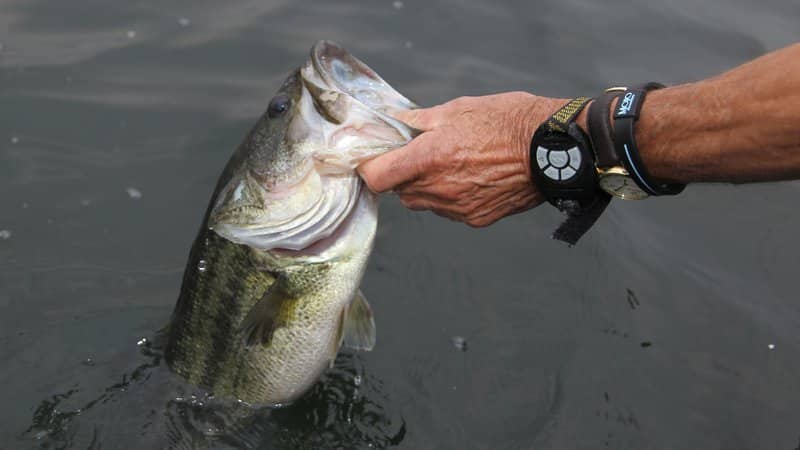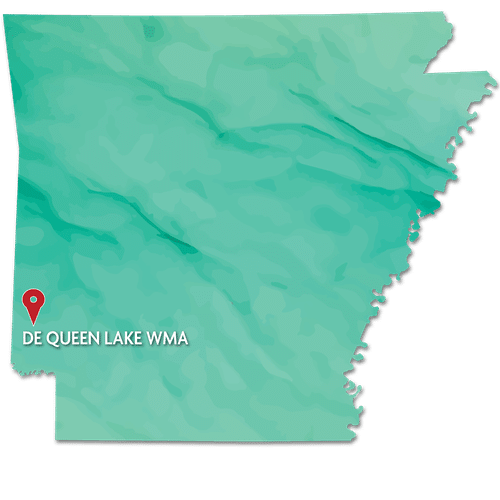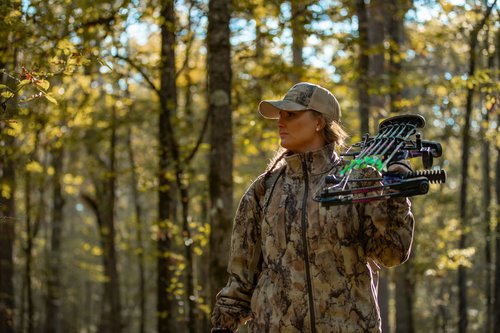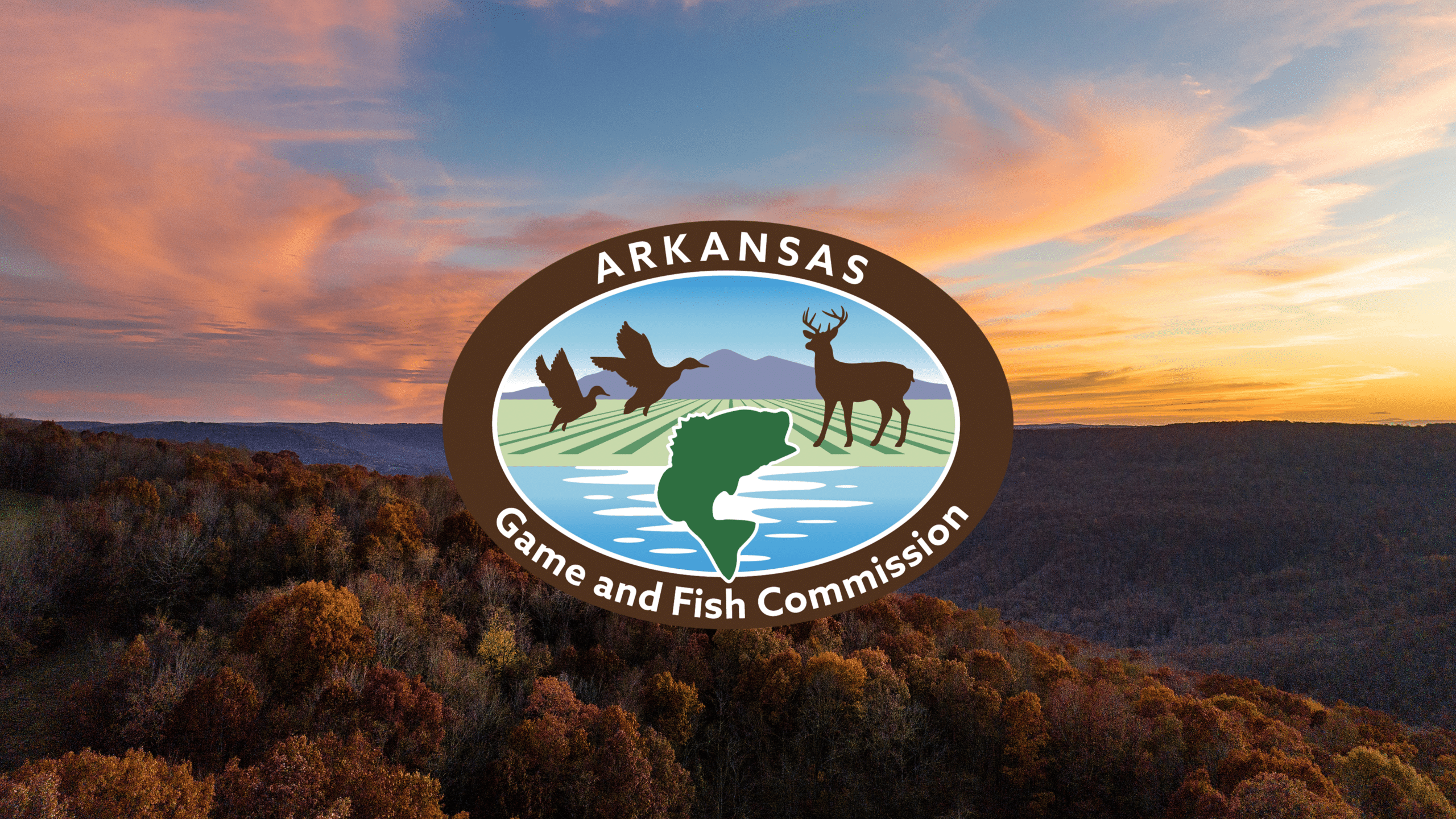De Queen Lake WMA a getaway for bowhunters, anglers
BY Jim Harris
ON 03-22-2023

March 22, 2023
Jim Harris
Managing Editor Arkansas Wildlife Magazine
DE QUEEN – De Queen Lake WMA is a great example of partners working together to provide public access and hunting opportunities in southwest Arkansas. The Army Corps of Engineers and the Arkansas Game and Fish Commission joined together in 2009 to form the WMA partnership. Together they manage the hunting and fishing opportunities around the lake in this region of the state where accessible public hunting land is in short supply.
The Corps of Engineers owns the property and the lake that make up the WMA, all 8,792 acres; the AGFC has a cooperative agreement to manage the hunting opportunities on the WMA. The AGFC has managed the fishery at De Queen Lake going on 46 years.
As with most Corps of Engineers lakes in the state, the Corps owns narrow sections of land around De Queen Lake. “This is where we can adapt hunting regulations to maximize opportunities while providing a safe environment around the lake,” the AGFC’s Griffin Park, AGFC wildlife supervisor, says of the almost 7,000 acres of Corps property around the lake.
“The WMA provides a good population of deer and turkey and can even see a bear sometimes,” Park said. “It’s a great WMA that provides great hunting and fishing opportunities along with some excellent camping, all in one spot.”

Quail, dove, squirrel and rabbit are also found on the WMA.
The Corps began planning De Queen Lake in 1958 through the Federal Flood Control Act, and construction started in 1966. In 1977 it was the last of the Tri-Lakes of De Queen, Dierks and Gillham in southwest Arkansas to open. Over the years more individuals have purchased lots and small acreage from larger land owners around the lake and built homes on ridges around the lake.
Once the WMA was formed, hunting regulations could be customized to provide unique hunting opportunities while providing a safe environment for anglers on the lake and adjacent residences, Park said. The area south of Bella Mine Road is designated as archery only hunting, no hunting is allowed at the park and camping areas, and the Dike C Firearms Unit, the Jordan Tract Firearm Unit and the property north of Bella Mine Road are open to firearms hunting. (Refer to the AGFC’s Hunting Guidebook and WMA map.)
Of the Tri-Lakes complex, De Queen Lake is fed by the Rolling Fork River. The Cossatot River is dammed to create Gillham Lake. Dierks Lake receives its water from the Saline River. And all of this watershed eventually flows into the massive Millwood Lake, along with Little River, which comes out of southeastern Oklahoma.
Locals around De Queen and residents of nearby Texarkana and surrounding areas into Oklahoma are the main users of the lake, according to Dylan Hann, the AGFC’s fisheries supervisor in the southwest region.

“We do a lot with De Queen,” he said. “It’s a really good largemouth bass fishing and crappie fishing lake.” The lake is also well populated with all three species (channel, blue and flathead) of catfish, with annual stockings of either “catchable” or yearling channel cats. The lake has good numbers of largemouth and crappie, based on sampling results from 2022, Hann said.
De Queen Lake and the other Tri-Lakes differ in design from lakes like Millwood to its south.
“It’s a Ouachita Highlands reservoir above the foothills,” Hann said. “Its main purpose is flood control. The Tri-Lakes are all identical in size and how they were built. They see large water fluctuations and have deep areas, steep banks, some flooded timber in the back of channels, but the majority is deep parts meant to hold water for flood control.
The Corps of Engineers maintains three swim beaches and several boat launches, plus 110 campsites, fish cleaning stations, picnic sites and more. Some of the popular areas to camp include Bellah Mine Park on the north end of the lake, with 24 campsites with electricity and water, showers, flush toilets, trailer dump station, picnic areas and shelter, and boat ramp; 36 campsites and pavilions plus boat ramps at Oak Grove Park; and 17 campsites with water and electricity, showers, flush toilets, trailer dump station, picnic shelter and boat ramp at Pine Ridge.
De Queen Lake WMA would seem to fall under “hidden gems” when it comes to what it offers both the hunter or angler or recreational boater. There aren’t any walking or water trails for the nonhunter in the WMA.
Park says, “It’s just one of those little areas, a little niche for public hunting where there is not much public ground. It even provides a little waterfowl hunting. I’ve been fishing on the lake in September and there will be hunters there for early teal season. There are a few Canada geese on the lake, and they provide a shooting opportunity in the early season as well.
“Mainly, though, bowhunting and fishing are the two main attractions to the lake and WMA. There are a couple of nice (Corps-maintained) campground areas. Don’t be surprised to see 20-plus pound stringers of bass at local tournaments on the lake.”
CUTLINES:
Bass
Largemouth bass fishing is a popular draw to De Queen Lake in summer.
Map
De Queen Lake WMA encompasses nearly 8,800 acres in Sevier County.
Bowhunter
Bowhunting is a popular pursuit on De Queen Lake WMA.
Recent News

AGFC Commissioner Meeting Notice
Apr. 16, 2024
Subscribe to Our Weekly Newsletter E-mails
Don’t miss another issue. Sign up now to receive the AGFC Wildlife Weekly Newsletter in your mailbox every Wednesday afternoon (Waterfowl Reports are published weekly during waterfowl season and periodically outside the season). Fishing Reports arrive on Thursdays. Fill in the following fields and hit submit. Thanks, and welcome!

